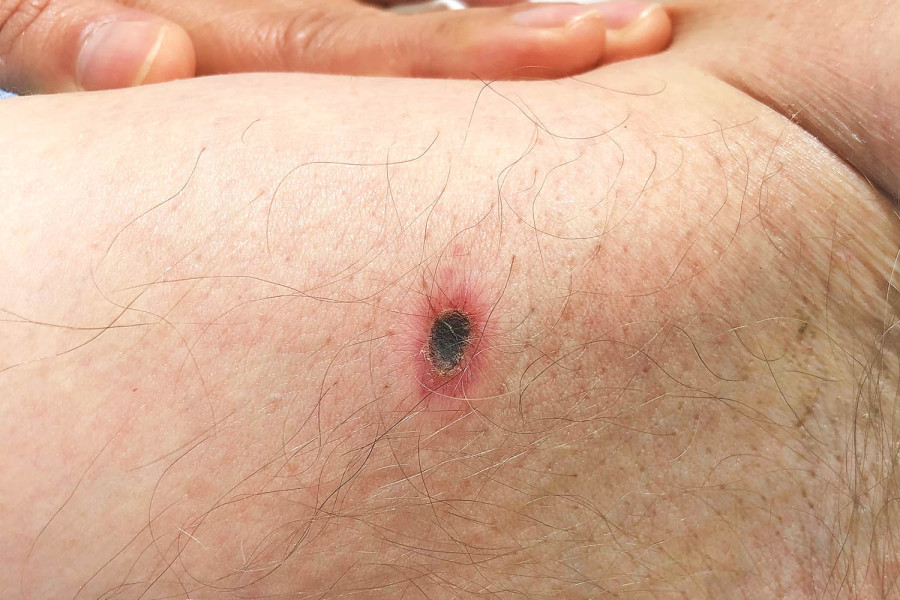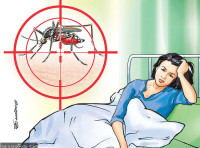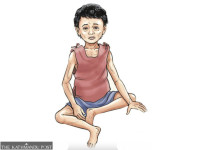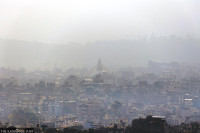Health
Scrub typhus spreads to urban settings, hinting at growing risk
Over 3,900 people have contracted the disease so far this year. Doctors say mis-diagnosis and delay in diagnosis and treatment of the infection lead to severity and deaths.
Arjun Poudel
Last week, a 40-year-old woman from the New Baneshwar area of Kathmandu was rushed to the emergency ward of Civil Hospital after complaining of weakness in her limbs. Despite taking medications after various tests at a private clinic, her ailments— high fever and severe body aches, headache, abdominal pain, and joint and muscle pain—did not subside.
“Doctors at Civil Hospital recommended various tests including testing of scrub typhus, which show a positive result,” one of her relatives, who wished to keep the case private, told the Post. “Physicians, however, took the test result as false positive and recommended another test but the second test also confirmed scrub typhus positive.”
Scrub typhus, or bush typhus, is an infectious disease caused by the parasite Orientia tsutsugamushi, a mite-borne bacterium. It spreads in humans when bitten by infected chiggers (larval mites) found in mice.
Until now, it is believed that people residing in rural areas or those working in grasslands or fields are at high risk of getting infected. However, the infection in people from urban settings shows a growing risk from the deadly disease.
The Epidemiology and Disease Control Division, an agency responsible for containing outbreaks in the country, said that over 3,900 people have been infected by scrub typhus since January.
“So many people residing in urban areas have tested positive to scrub typhus,” said Dr Gokarna Dahal, chief of the Vector Control Section at the division. “Compared to people from urban areas, those residing in villages have been infected more but people residing in urban areas have also tested positive to the disease and hospitalised.”
Officials at the division said that over 1,000 people from Sudurpaschim Province have tested positive for the disease this year. Kailali and Kanchanpur of Sudurpaschim Province, and Nuwakot and Dhading of Bagmati Province are among the highly affected districts, which reported more cases. Officials said the number of infected could rise in the coming days as the season of scrub typhus is not over, and it takes time for all the cases to get reported in the government system.
Doctors point out high fever, headache, abdominal pain, backache, joint and muscle pain, red rashes, nausea and vomiting as some symptoms of scrub typhus infection.
Patients with severe illness may develop bleeding, which could lead to organ failure. The infection can cause respiratory distress, inflation of the brain and lungs, kidney failure and then multi-organ failure. If not treated immediately, it could be fatal.
Nepal saw a surge in scrub typhus cases after the calamitous 2015 earthquakes that killed nearly 9,000 persons.
Three months after the quakes, the BP Koirala Institute of Health Sciences, Dharan had alerted the Epidemiology and Disease Control Division about six children with unusual fever and severe respiratory problems.
Serum samples were collected for subsequent tests in Kathmandu and Bangkok that confirmed a scrub typhus outbreak. By then, four children had already died in the course of treatment. By the end of the year, 101 cases were confirmed in 16 districts and four more people succumbed to the disease.
The magnitude of the outbreak escalated in 2016—831 cases of scrub typhus were reported in 47 districts and 14 people died by the end of that year.
According to data from the Ministry of Health and Population, more than 1,026 people were infected with the disease in 2020. In 2021, their number increased to 1,999, while in 2022, it rose to more than 2,900.
The neglected tropical disease has been emerging as a new health challenge in Nepal, according to doctors.
The risk of severity and fatality can be minimised if the patients are diagnosed and treated early, they say.
“The problem is most hospitals and health workers still do not recommend scrub typhus testing,” said Dr Sher Bahadur Pun, chief of the Clinical Research Unit at the Sukraraj Tropical and Infectious Disease Hospital. “Delayed diagnosis leads to delay in starting treatment, which increases the risk of deterioration in the health of infected persons.”
Doctors say ordinary antibiotics like doxycycline and azithromycin, which are on the essential drugs list supplied by the government to health facilities across the country for free distribution, can cure the disease.




 7.12°C Kathmandu
7.12°C Kathmandu














